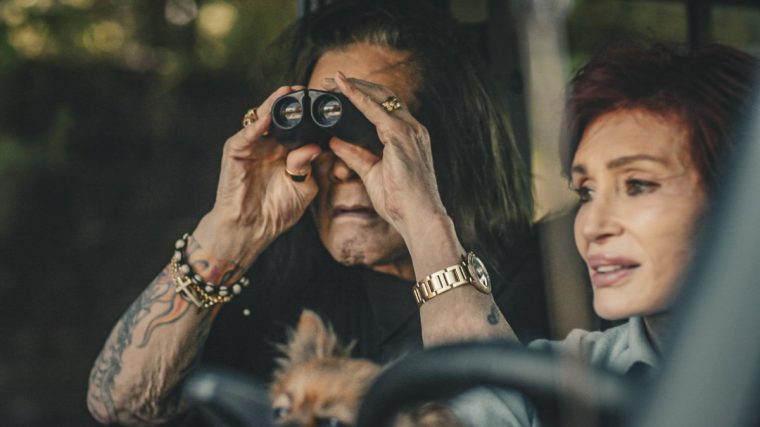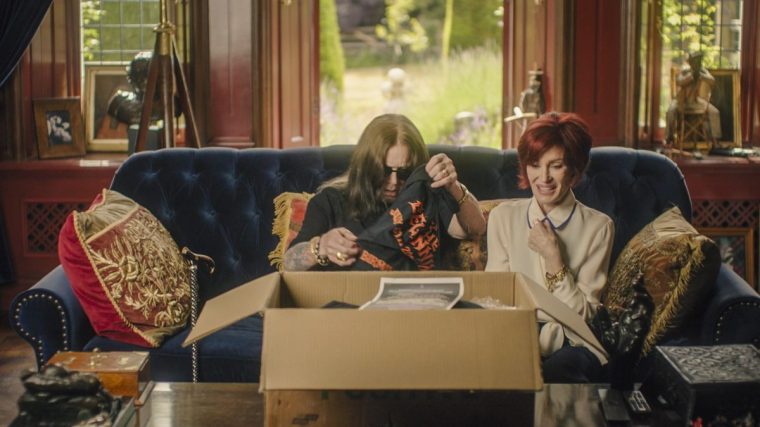This one-off film is an endearing portrait of the godfather of heavy metal – but it feels problematic and invasive nonetheless
About halfway through Coming Home, Sharon and Ozzy Osbourne are sat around their kitchen table in Los Angeles, contemplating their move back to the UK after several decades living in the US. Sharon has just learned that the country pile in Chalfont St Giles they own was formerly a lunatic asylum. Ozzy is jubilant, and rattles his jewellery in celebration. “I’ve got a madhouse in England!” he cries.
If there is a certain sense of pantomime, it’s because the Osbournes have spent their whole lives creating one. They have been playing up to the cameras for the better part of 25 years now, first on their fly-on-the-wall self-titled documentary reality series, which ran between 2002 and 2005, and Sharon then perfected her Ice Queen routine during her stint as a judge on The X Factor. Being hammily provocative runs in the blood.
Coming Home was initially envisaged as a 10-part series charting the couple’s journey into retirement (at one point Ozzy muses that he might like to “grow a vegetable garden”), but the singer’s failing health soon put paid to that. And so what we have been left with is a one-off film that feels cobbled together.

It was originally due to be broadcast back in August, just a month after Ozzy’s death at the age of 76 from a heart attack, but, at the request of the grieving family, was postponed at the last minute. Watching it now, you can rather see why: it’s neither intimate nor particularly revealing.
What it does offer is an hour’s worth of familial conversations about the fact that their children – Kelly, 40, and Jack, 39 – are sad that Ozzy and Sharon are about to flee the nest. (Oldest sibling Aimee, 42, is as ever conspicuous by her absence.) Both Jack and Kelly are now parents, and they like that their brood have grandparents nearby. They wish they’d stay – Buckinghamshire is miles from California.
These discussions are rehashed in various rooms, and across various settings, but only ever skim the surface of a subject that they likely – and appropriately – only properly debated behind closed doors. So the documentary falls back on established Osbourne tropes instead: jokes, swearing, and their many dogs defecating everywhere.
Meanwhile, Sharon is criss-crossing the Atlantic in order to get their “lunatic asylum” Ozzy-ready, which requires several extensions by a team of builders. Looking out onto the undulating lawn, Sharon says that it would be nice if there was a lake there. A lake is duly put in.

A good portion of the film revolves around Ozzy trying desperately to get match fit for his farewell concert at Villa Park in July, which is difficult given his Parkinson’s disease and a spinal injury that has left him in constant pain. However, we see no rehearsals, meet none of the other acts (which include Guns N’ Roses, Metallica and Aerosmith), and cameras are even denied access to the event itself, leaving a huge gap in the story of Ozzy’s last months.
And then suddenly there are flowers in the street. Ozzy’s funeral is not shown either and Sharon is no longer available for interview. It’s over.
In many ways, Coming Home feels problematic and it is certainly invasive. Its focus – a famous rock star – is dealing with nothing less than his own mortality, while his family rightly crave privacy against a production crew yearning for all-access. Neither party, you sense, is happy with their compromise.
As a portrait of music’s fading but most endearing Dark Lord, it is touching and tender. But perhaps this very public couple’s final moments should have remained, ultimately, private.
‘Sharon and Ozzy Osbourne: Coming Home’ is streaming on BBC iPlayer
